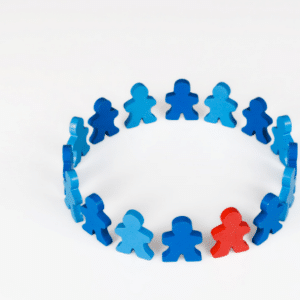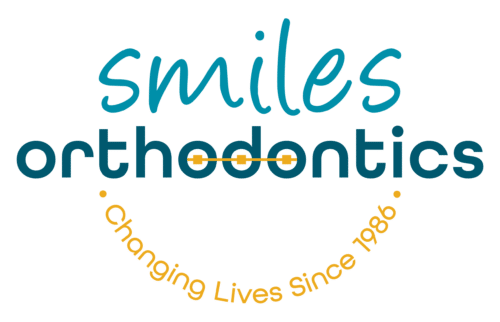Written by Dr. Suman Gorantla
Published in the February/March 2014 Edition
HEALTH Matters Magazine pages 20-21.

Facial appearance (more so the eyes and mouth) plays a key part in physical attractiveness1, 2, 3, 5. It has also been shown there is a relationship between malocclusion/orthodontic treatment need and health-related quality of life2. It is a reality that dental and facial esthetics have clearly been shown to influence children’s perceptions of their peer’s athletic, social, leadership, and academic abilities2. A recent article published in the American Journal of Orthodontics and Dentofacial Orthopedics points to a high prevalence of bullying directly related to dental and facial appearances in school-age kids. This article explained that this age group is particularly vulnerable to bullying resulting in low self-esteem, depression, mental and physical illnesses, poor academic performance, and crime1!
The good news is orthodontic treatment can address many of the common esthetic concerns. Orthodontic treatment is not as uncomfortable or time-consuming as it used to be. With advances in materials, radiographic imaging and innovative technology, many orthodontic issues, which previously took longer to treat, can be handled much quicker today. With the introduction of mini-screws (TADs) some procedures needing surgical correction can be handled less invasively. Soft tissue lasers can shorten treatment time by enabling access to teeth that we previously would’ve had to wait to erupt, thus delaying the treatment process. Orthodontic appliances do not have to be as cumbersome and unaesthetic as they used to be. With the availability of clear braces and clear aligner trays, orthodontic treatment can cater to any lifestyle or esthetic needs. Customized braces are a novel concept where braces and wires are custom-made using 3D imaging technology to address individual patient esthetic needs and smile design.
Orthodontic treatment is for the whole family. It is never too late to have a great smile! The American Association of Orthodontists (AAO) recommends a consult with an orthodontist for kids as early as 7 years old to intervene with any developing bite or jaw growth-related issues. Most of the children may not need treatment at that age, but a consult wouldn’t hurt to avoid expensive and time-consuming procedures later on. Discuss your concerns with your orthodontist, including the issues mentioned above, to see how he/she can be of help. If you are an adult, remember advances in orthodontic technology can help you with issues which were impossible not too long ago!
Orthodontists draw from a diverse array of “appliances” to move teeth and align jaws. But not all types of orthodontic appliances are right for correcting all kinds of orthodontic problems. Your orthodontist will analyze your mouth and jaws, formulate a treatment plan, set goals, and recommend the best way for you to achieve those goals. The recommendation will include the type of appliance needed to reach the desired result; how to care for your appliance, teeth and gums; and how often to visit your family dentist for check-ups and professional cleanings.
Here are a few kinds of appliances commonly used:
Braces
Braces generally have two components: brackets and wires. Today’s brackets can be made of metal or tooth-colored ceramic. They are usually attached to the front of your teeth, but some can be “hidden” behind your teeth. Wires, which do the work of moving your teeth, are threaded through slots in the brackets. You will need to see your orthodontist periodically to adjust your wires.
Aligners
Aligners are generally made of a clear plastic or acrylic material and are custom-shaped to your teeth. A series of aligners is necessary to reach treatment goals. Each aligner is worn for a few weeks. They progressively move teeth toward their desired positions. Aligners must be removed to eat, brush and floss. Because they are removable, patients must be sure to follow their orthodontist’s instructions on daily wear.
Retainers
Retainers preserve and stabilize your results from orthodontic treatment. They are the best way to control or limit changes in tooth position. Retainers can be removable or permanent. Removable ones can be traditional with wires, or clear; similar to aligners. Permanent ones generally consist of wires bonded either behind the bottom or top teeth. Wear your retainers as prescribed to maintain your healthy new smile.
Every person is responsible for his own looks after 40.
– Abraham Lincoln
Source:
1. Al-Bitar ZB, Al-Omari IK, Sonbol HN, Al-Ahmad HT, Cunningham SJ. Bullying Among Jordanian Schoolchildren, Its Effects On School Performance, And The Contribution Of General Physical And Dentofacial Features. Am J Orthod Dentofacial Orthop 2013;144:872-8
2. Heston ST, Lindauer SJ, Gardner WJ, Shroff B, Tufekci E, Best AM. Influence Of Dental Esthetics On Social Perceptions Of Adolescents Judged By Peers. Am J Orthod Dentofacial Orthop 2011;140:389-95.
3. Kerosuo H, Hausen H, Laine T, Shaw WC. TheInfluenceOfIncisalMalocclusionOnTheSocialAttractivenessOfYoungAdultsInFinland. Eur J Orthod 1995;17:505-12.
4. Liu Z, McGrath C, Hagg U. The Impact Of Malocclusion/Orthodontic Treatment Need On The Quality Of Life: A Systematic Review. Angle Orthod 2009;79:585-91.
5. Shaw WC, Rees G, Dawe M, Charles CR. The Influence Of Dentofacial Appearance On The Social Attractiveness Of Young Adults. Am J Orthod 1985;87:21-6.
